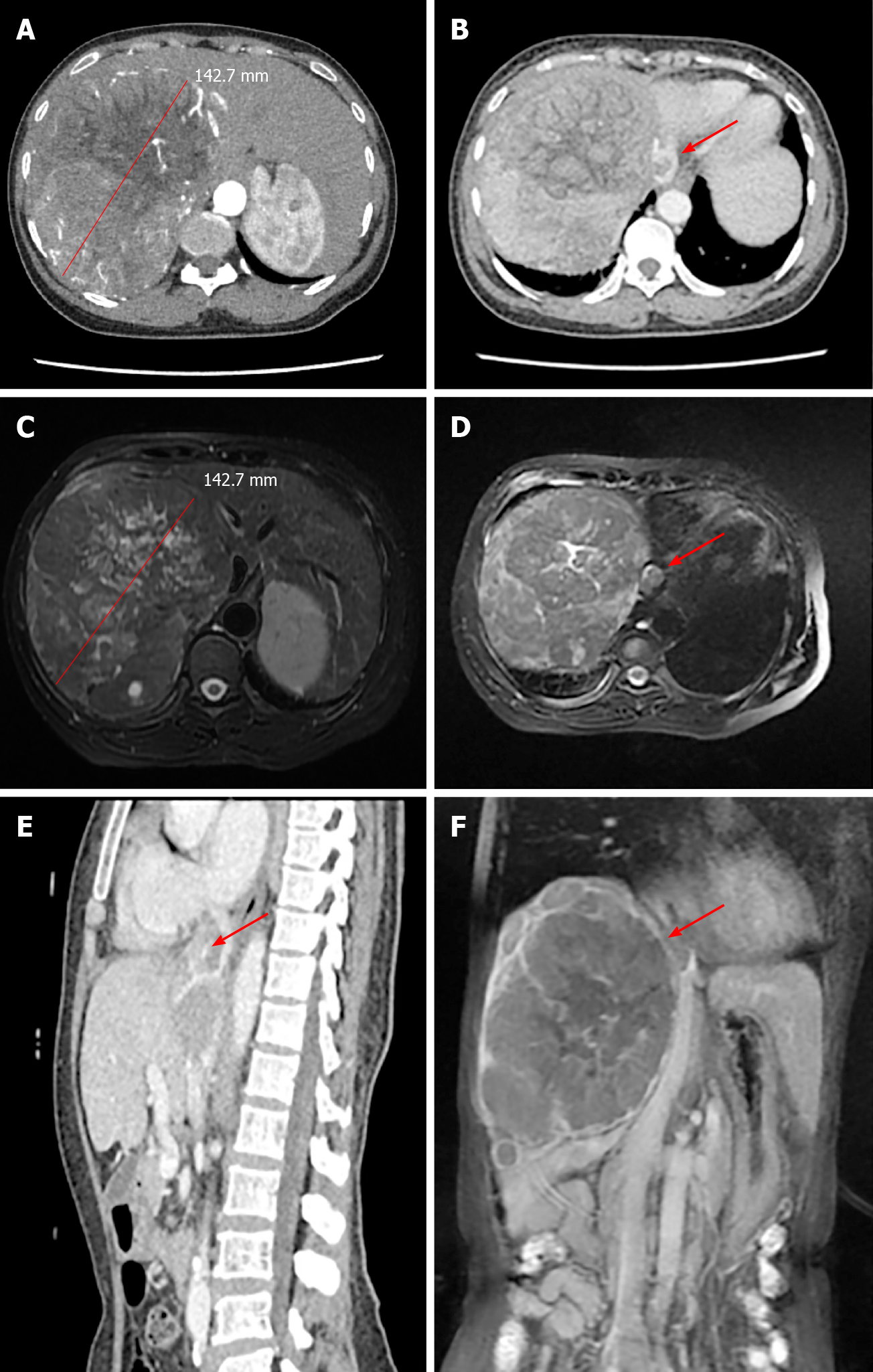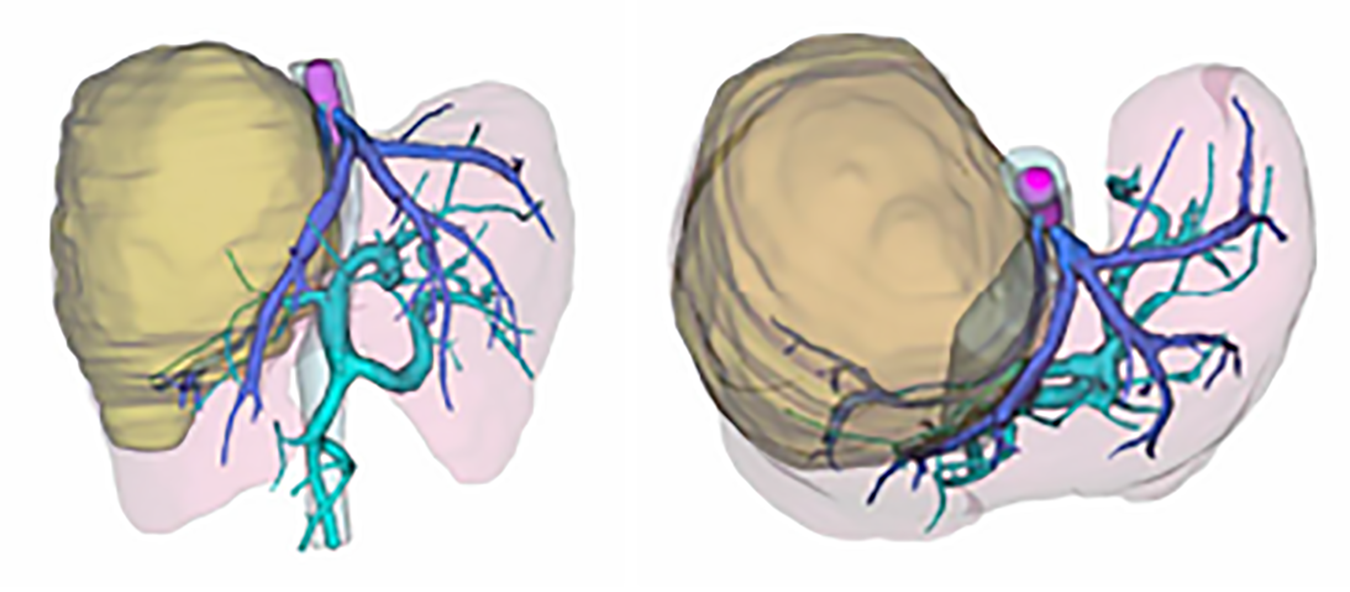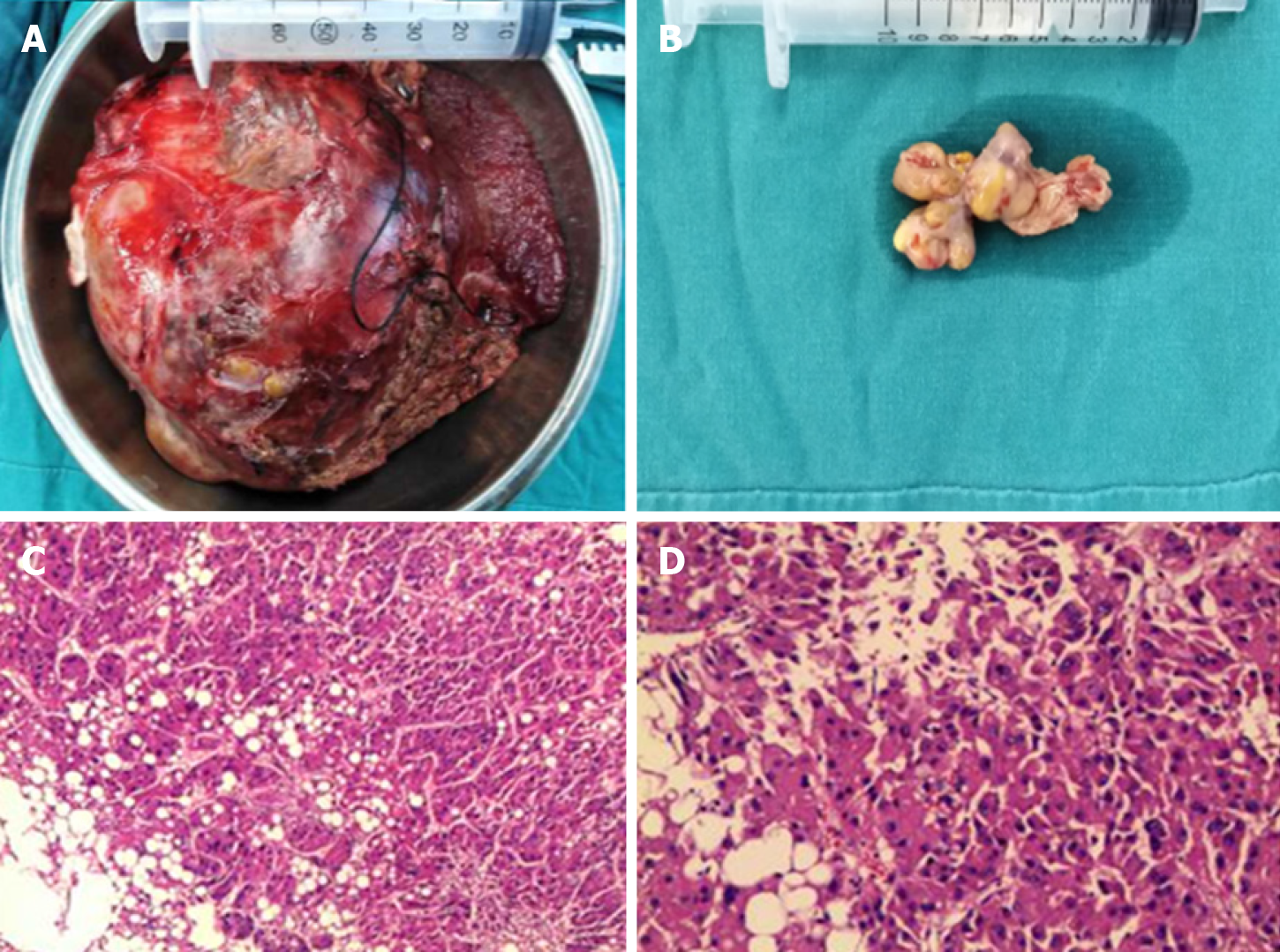Copyright
©The Author(s) 2021.
World J Clin Cases. Dec 26, 2021; 9(36): 11495-11503
Published online Dec 26, 2021. doi: 10.12998/wjcc.v9.i36.11495
Published online Dec 26, 2021. doi: 10.12998/wjcc.v9.i36.11495
Figure 1 Preoperative imaging studies.
A: Liver-enhanced computed tomography (CT) showing the diameter of the tumor lesion in the liver; B: The tumor thrombus was detected in the supra-hepatic inferior vena cava (red arrow); C: Magnetic resonance imaging (MRI) showing the diameter of the tumor lesion in the liver; D: The tumor thrombus was detected in the supra-hepatic inferior vena cava (red arrow); E and F: The sagittal plane was reconstructed by CT (E) and MRI (F) and shows the position of the tumor thrombus (red arrow).
Figure 2 The three-dimensional reconstruction of this patient was performed by using computed tomography scanning images.
The tumor and thrombus are shown in yellow and pink, while the hepatic vein and portal vein are shown in deep and light blue, respectively.
Figure 3 Operative findings.
A and B: The tumor lesion and tumor thrombus; C and D: Pathological confirmation of the tumor lesion and tumor thrombus.
Figure 4 The computed tomography scan at 6 mo after the surgery.
- Citation: Zhang ZY, Zhang EL, Zhang BX, Zhang W. Surgery for hepatocellular carcinoma with tumor thrombosis in inferior vena cava: A case report. World J Clin Cases 2021; 9(36): 11495-11503
- URL: https://www.wjgnet.com/2307-8960/full/v9/i36/11495.htm
- DOI: https://dx.doi.org/10.12998/wjcc.v9.i36.11495












